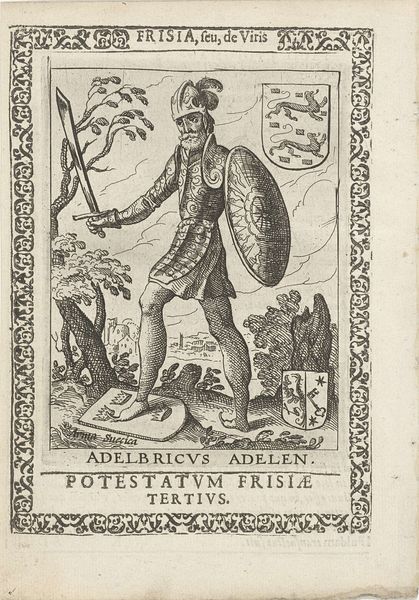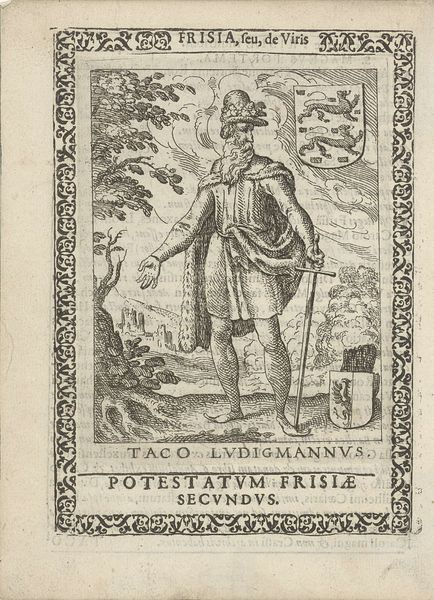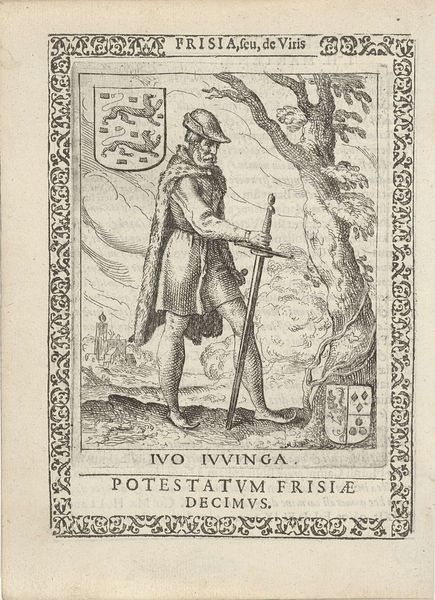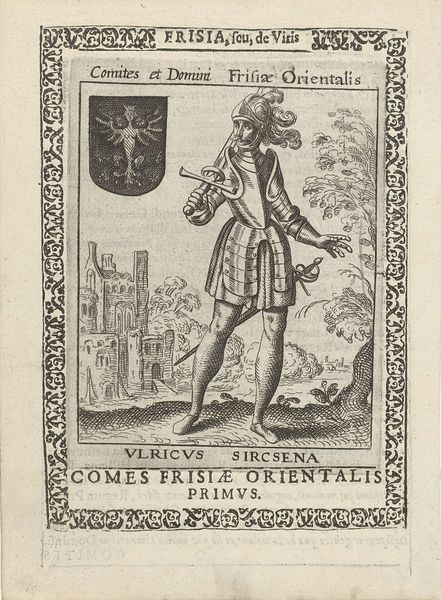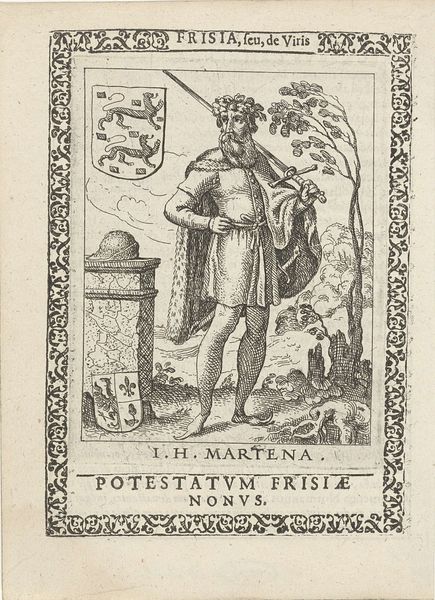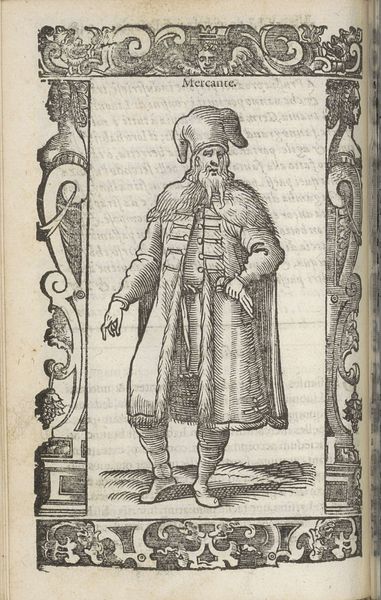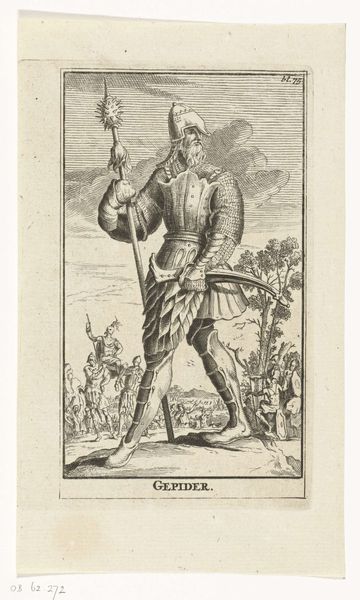
Reinier Camminga, achtste potestaat van Friesland 1618 - 1620
0:00
0:00
drawing, print, paper, ink, pen, engraving
#
portrait
#
drawing
# print
#
pen illustration
#
pen sketch
#
figuration
#
paper
#
11_renaissance
#
ink
#
pen
#
history-painting
#
northern-renaissance
#
engraving
Dimensions: height 125 mm, width 100 mm, height 158 mm, width 115 mm
Copyright: Rijks Museum: Open Domain
Curator: Let's discuss this fascinating engraving of Reinier Camminga, eighth Potestaat, or Governor, of Friesland. Pieter Feddes van Harlingen created this work between 1618 and 1620. It's currently held at the Rijksmuseum. Editor: The first thing that strikes me is the direct gaze, almost challenging, and the tension between the military bearing and that sprig of leaves he holds. It's an odd combination. Curator: The prints like these were very much tied to establishing a lineage of power, of visualizing authority. Notice the coat of arms above him—heraldry served as a crucial tool for asserting social status and legitimacy in early modern Europe. The imagery becomes a shorthand for power. Editor: Exactly, and who gets to be represented and how is key. It is a power play. Camminga is portrayed as a powerful figure, yet the Northern Renaissance style reminds me of the limitations of that power, doesn’t it? Everything’s meticulously detailed, yet stiff. Is that the limits of the printing process, or the limits of imagining authority? Curator: A bit of both, perhaps. The conventions of the time certainly played a part. Portraiture like this functioned as propaganda, influencing public perception and reinforcing social hierarchies. His dress, though maybe stiff to us, sends a clear message about wealth and martial prowess. Editor: Still, that sprig… It seems a deliberate attempt to soften the image, perhaps an attempt at reconciliation after conflict? Or is it simply an allegory of peace through strength? It would be interesting to delve deeper into the contemporary context in Friesland. Were there particular conflicts, succession issues perhaps, that this imagery responds to? Curator: It also invites questions about intended audience. Prints like this were often circulated amongst an elite group, solidifying a sense of shared identity and values within that class. They functioned as markers of distinction and belonging. Editor: Considering how image politics work even now, it highlights that image management and representation is really about access, who is being seen and on whose terms. Curator: A really apt connection. Examining prints like this reminds us how strategies for crafting public images aren't necessarily new, even in the age of social media. Editor: Indeed. Thinking about Reinier Camminga, this engraving invites reflection on power, symbolism, and the intricate dance between historical context and contemporary resonance.
Comments
No comments
Be the first to comment and join the conversation on the ultimate creative platform.
